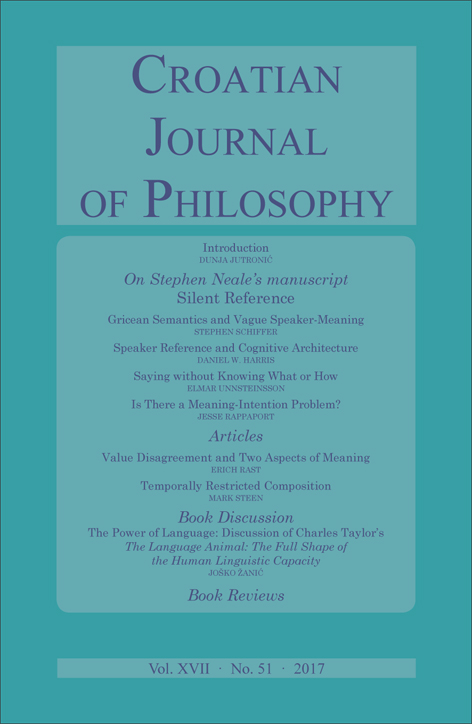Speaker Reference and Cognitive Architecture
Speaker Reference and Cognitive Architecture
Author(s): Daniel W. HarrisSubject(s): Semantics, Pragmatics, Cognitive linguistics, Philosophy of Language
Published by: KruZak
Keywords: Reference; compositional semantics; intentionalism; modularity; the semantics-pragmatics interface;
Summary/Abstract: Philosophers of language inspired by Grice have long sought to show how facts about reference boil down to facts about speakers’ communicative intentions. I focus on a recent attempt by Stephen Neale (2016), who argues that referring with an expression requires having a special kind of communicative intention—one that involves representing an occurrence of the expression as standing in some particular relation to its referent. Neale raises a problem for this account: because some referring expressions are unpronounced, most language users don’t realize they exist, and so seemingly don’t have intentions about them. Neale suggests that we might solve this problem by supposing that speakers have nonconscious or “tacit” intentions. I argue that this solution can’t work by arguing that our representations of unpronounced bits of language all occur within a modular component of the mind, and so we can’t have intentions about them. From this line of thought, I draw several conclusions. (i) The semantic value of a referring expression is not its referent, but rather a piece of partial and defeasible evidence about what a speaker refers to when using it literally. (ii) There is no interesting sense in which speakers refer with expressions; referring expressions are used to give evidence about the sort of singular proposition one intends to communicate. (iii) The semantics–pragmatics interface is coincident with the interface between the language module and central cognition.
Journal: Croatian Journal of Philosophy
- Issue Year: XVII/2017
- Issue No: 51
- Page Range: 319-349
- Page Count: 31
- Language: English
- Content File-PDF

